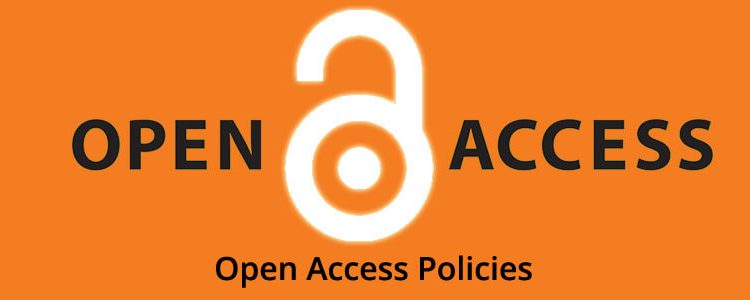Open Access Publishing Report Shows Positive Trends

Open access (OA) publishing means allowing access to published articles without a fee or costly subscriptions, a concept well received by researchers, scholars, and libraries, but not by some publishers, for obvious reasons. According to the Public Library of Science (PLOS), publishers automatically own the rights to published articles; therefore, they charge a fee to allow access to those articles. It is also the publisher, not the author(s), who grants permission (with an additional fee) for the use of published information. Institutional libraries, such as those at universities, are not exempt from fees and must pay huge annual subscription fees. This fee to access a title can be as high as $4,000. In recent times, paper copies of journal articles are no longer required, except for some citations protocols. Some believe that paying to read an article no longer makes sense since OA would eliminate these fees.
So, is this model taking hold? Is there too much resistance from the publishing industry that tends to outweigh the push for it? Research Consulting, founded by Rob Johnson in 2013, has evaluated OA publishing in Europe and has offered some suggestions for transitioning to this model.
Study on OA Publishing
The firm published a study in February 2017 entitled, “Towards a Sustainable and Competitive Open Access Market in Europe” for the OpenAIRE 2020 project, a partnership comprising of 50 European Union countries. The study addressed the economic factors that contribute to the OA market and evaluated ongoing competition and how that competition affects new OA policies being assessed.
It also evaluates the OA pilot program organized by OpenAIRE in connection with the 7th Framework Programme for Research and Technological Development, whose objectives are to:
- Explore the current status of the OA publishing market
- Analyze existing OA publishing business models
- Evaluate how different national and international policies complement each other as a means to achieve a transition to OA
- Evaluate the impact of the Framework Programme 7 Post-grant OA pilot and its implications for future similar initiatives and the transition to OA
- Provide a roadmap leading to a sustainable and competitive market
Effects on Researchers and Publishers
The scholarly journal market is a $10 billion-per-year industry comprising mainly of science (including medicine) and technical disciplines. Four pathways to OA were identified:
- OA archiving or Green OA: Articles published in institutional or subject repositories that are available freely.
- Gold-Hybrid: Subscription-based articles provided free after an article publication charge (APC) is paid.
- Gold-APC: Not subscription-based; provides OA articles after APC is paid.
- Gold No-APC: Full OA without APC charges
According to Gwen Franck in her March 2017 blog in OpenAIRE, Research Consulting studied the EU’s 2020 goal of ensuring immediate OA and concluded that “even getting close to this target will be very, very difficult.” Although the number of OA journals has increased annually, the overall global market proportion is only approximately 5%. Some disciplines, such as those in science, show more favorable results than others, mainly because the funders have insisted on OA publishing. Green OA has been mentioned in the study, however, because of the publishing waiting period of up to a year, Research Consulting decided to not include it in the results.
OA has major competition not only from publishers but also from cultural restrictions. Top-tier academic journals, such as Nature, remain as the much-sought-after goal of researchers, mainly because of their high impact factors and reputation for top-notch research articles. Publishers, such as Elsevier, have so-called “mini-monopolies” on some of these markets because of the need for researchers to publish in high-profile journals. The university or funder mandates this need many times. “Only five commercial publishers accounted for more than 50% of all articles published in 2013.” The major publishers still dominate the market, and their successful transition into the OA market is rare. Subscription-based publishing continues to see a profit of about 30% per year; therefore, there is little incentive for the transition to OA publishing, even with the added APC fees. In addition, researchers might be viewed as less prestigious if they use OA journals (on top of having to pay APC fees).
The study suggests that OA policy, funding, and monitoring in Europe are highly variable. Europe and the United States also differ on which model to use—the United States favors OA archiving, while Europe favors immediate OA. China, on the other hand, continues to favor high-profile subscription journals. Thus, each of the pathways has inconsistent support.
In addition, the peer-review process has been criticized in the OA market because of a perceived conflict of interest—incentives to publish as many papers as possible to generate revenue might trump quality control. In his 2016 article published in PLOS ONE, Jelte M. Wicherts discusses some of these issues in depth.
Next Steps
Six steps were recommended to “enable a competitive and sustainable open access market in Europe” based the current roadblocks:
- Author incentives: Create author incentives and remove disincentives.
- Publisher incentives: Provide subscription publishers with a viable transition route.
- Competition: Improve transparency.Pluralism: Support diverse approaches.
- Infrastructure: Develop a robust infrastructure.Monitoring: Ensure policy compliance.
The study concluded with a detailed description of each of its proposals in its appendix.
Reference
Research Consulting & OpenAIRE (2017, February) “Towards a Competitive and Sustainable OA Market in Europe – A Study of the Open Access Market and Policy Environment” Retrieved from https://blogs.openaire.eu/wp-content/uploads/2017/03/OA-market-report-28Final-13-March-201729-1.pdf.









